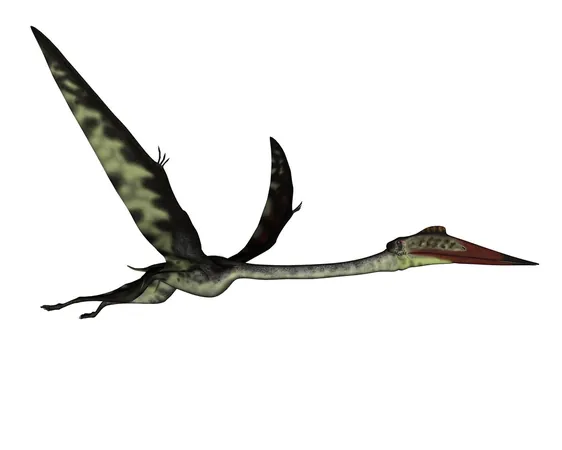
What Was the First Animal to Fly? The Surprising Truth Revealed!
2025-04-08
Author: Rajesh
The ability to soar through the skies is not just a fantasy but a remarkable trait shared by various animal species, from delicate insects to magnificent birds and agile bats. The mechanics of flight vary significantly among these creatures, but they all harness muscular power to generate lift, allowing them to stay airborne—a concept known as powered flight. This characteristic sets true flyers apart from gliders like the flying squirrel or flying fish, which, despite their names, are not capable of true flight.
The Earliest Flyers
Historically, the first creatures to take to the skies were insects, marking an evolution that began during the Carboniferous Period about 350 million years ago, long after their distant ancestors emerged around 485 million years ago in the Ordovician Period. The pioneering winged insect, known as Delitzschala, measured a mere 2.5 cm across. Although it was small compared to its relatives, it represents a significant milestone in evolutionary history. Other massive prehistoric insects, such as Mazothairos, sporting a wingspan of 55 cm, demonstrate the incredible diversity that once existed.
Research suggests a controversial contender for the title of the oldest flying creature: Rhyniognatha, which may not have had wings and might even belong to a different arthropod group. The scarcity of well-preserved fossils from this era leaves many questions unanswered about how and why the ability to fly emerged among these ancient insects.
Evolutionary Milestones in Flight
The evolutionary timeline of flight shows that powered flight has arisen independently at least four times: first in insects, followed by pterosaurs during the Late Triassic period, then in birds, and finally in bats. Pterosaurs were unique as the only lineage of flying vertebrates that are now extinct, vanishing around 66 million years ago alongside the dinosaurs.
The largest pterosaur known to exist was Quetzalcoatlus northropi, weighing over 200 kg and boasting an incredible 11-meter wingspan, comparable to that of a small airplane! Yet, not all pterosaurs were giants; some species were diminutive, showcasing the variability in size and adaption among flying reptiles.
Feathered Fliers: The Rise of Birds
Birds first appeared around 150 million years ago, with Archaeopteryx showcasing a mix of avian and dinosaur characteristics, such as feathers and a long tail. By the Late Cretaceous period, birds without question dominated the skies, showcasing their exquisite adaptations that include powered flight capabilities through advanced feather structures and powerful muscles.
Bats: Masters of the Night Sky
Bats, the last major group to evolve flight, spread across the globe following the extinction of non-avian dinosaurs. The earliest known bat, Onychonycteris finneyi, thrived about 52.5 million years ago, providing evidence that bats have had the ability to fly for a considerable amount of time.
Advantages of Flight
The ability to fly bestows numerous advantages upon these groups, enabling them to escape predators, access diverse food sources, migrate across vast distances, and occupy various ecological niches. Insects, birds, and bats represent some of the most diverse animal groups, with insects triumphing as the most species-rich category on the planet.
Interestingly, flight isn’t the end-all of evolutionary progress. Some birds have evolved back into flightlessness, adapting to specific environments. With over 60 species of flightless birds, such as the kiwi and ostrich, evolution frequently takes surprising turns.
The Strangest Flying Techniques
While traditional flight typically involves wings, several creatures adopt unique methods to navigate the air. One curious example is the flying fish, which launches itself from the water and glides using its specially adapted fins to escape predators. Another unusual technique is ballooning, where young spiders use silk threads to catch the wind and sail through the air.
Humans, too, have emulated the desire to fly, inventing machines and adopting various adventurous practices that range from aircraft to wingsuits, reflecting our fascination with conquering the skies.
Final Thoughts
The evolution of flight remains one of nature's most awe-inspiring stories, woven through the fabric of time. Questions about the intricacies behind this incredible ability continue to spur research and fascination, reminding us of the myriad ways life has adapted to thrive on our planet. With ongoing discoveries, who knows what secrets the past will still reveal about the first animals to take to the air?

 Brasil (PT)
Brasil (PT)
 Canada (EN)
Canada (EN)
 Chile (ES)
Chile (ES)
 Česko (CS)
Česko (CS)
 대한민국 (KO)
대한민국 (KO)
 España (ES)
España (ES)
 France (FR)
France (FR)
 Hong Kong (EN)
Hong Kong (EN)
 Italia (IT)
Italia (IT)
 日本 (JA)
日本 (JA)
 Magyarország (HU)
Magyarország (HU)
 Norge (NO)
Norge (NO)
 Polska (PL)
Polska (PL)
 Schweiz (DE)
Schweiz (DE)
 Singapore (EN)
Singapore (EN)
 Sverige (SV)
Sverige (SV)
 Suomi (FI)
Suomi (FI)
 Türkiye (TR)
Türkiye (TR)
 الإمارات العربية المتحدة (AR)
الإمارات العربية المتحدة (AR)